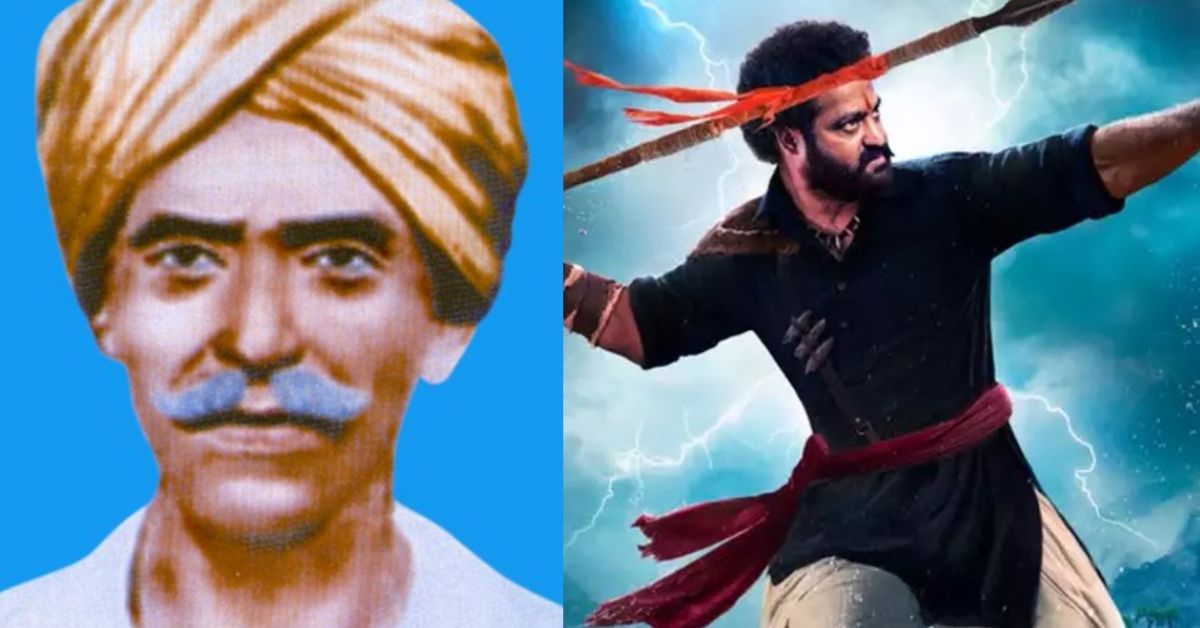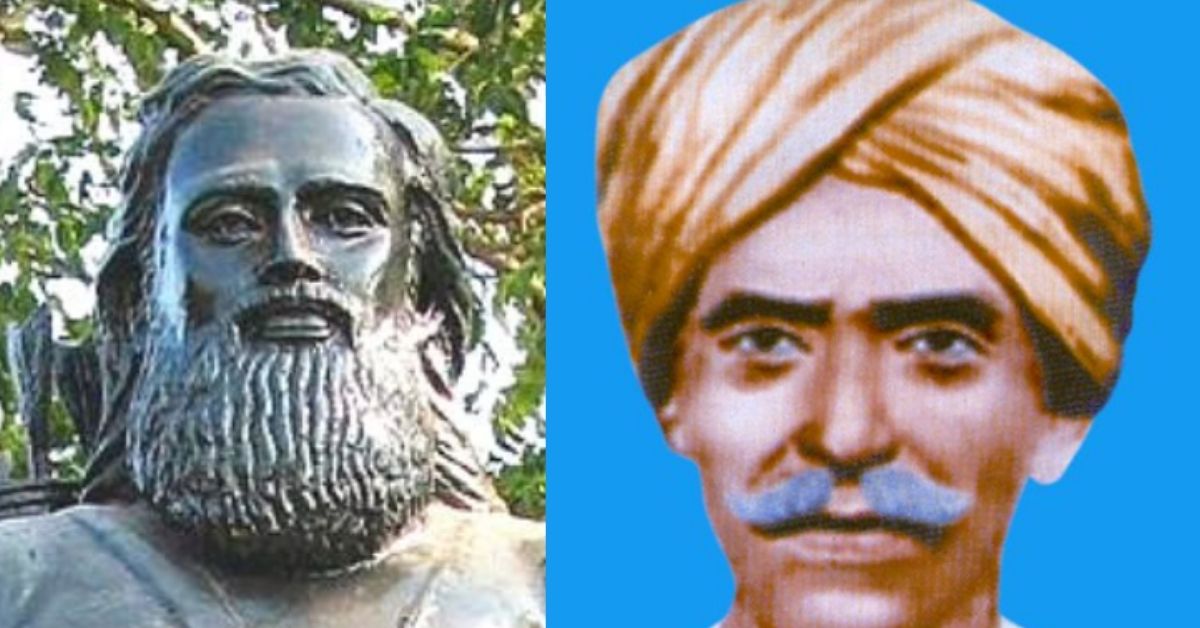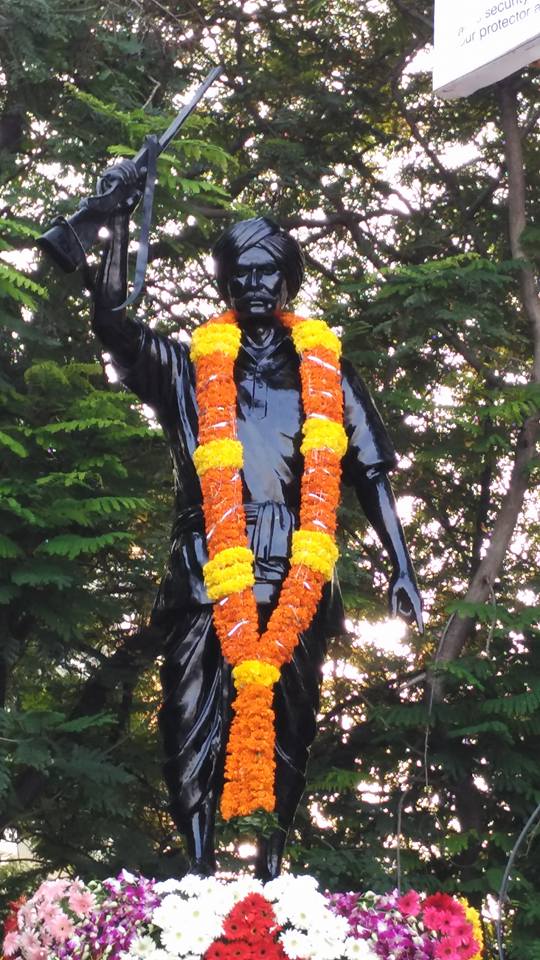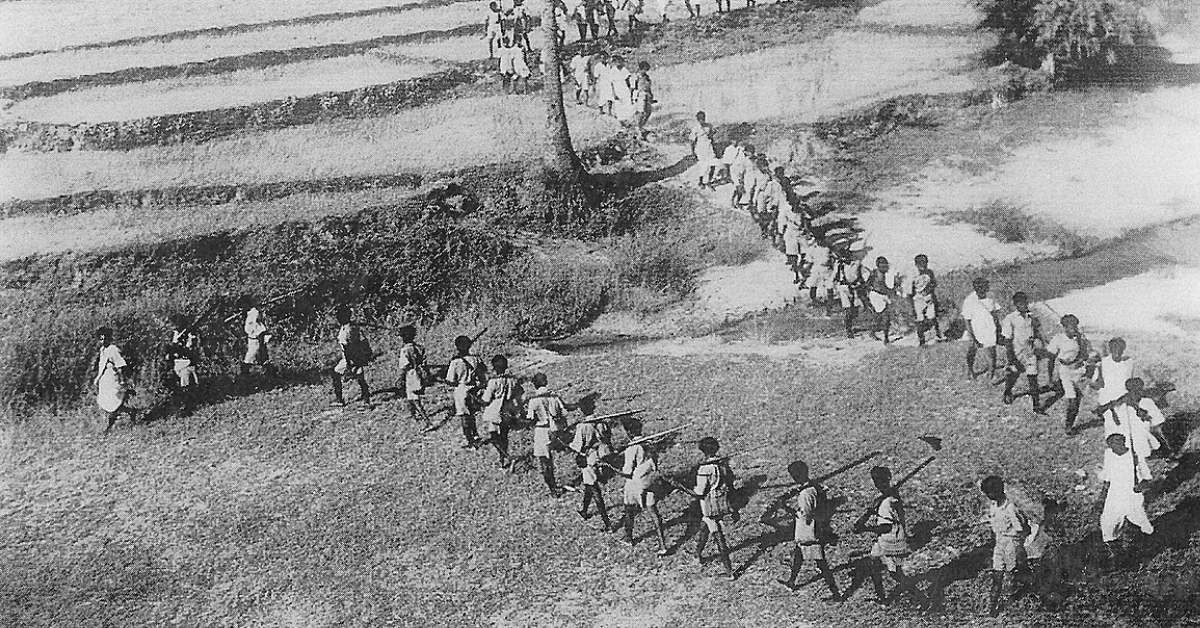Real-Life Hero Behind ‘RRR’: The Forgotten ‘Bheem’ & A Revolution Against The Nizam
As the Telugu period drama RRR is set to release in January next year, we take a look at the life of the film's subject, Komaram Bheem, and how he channeled a life time of suffering into mobilising the Gond community to rebel against the feudal Nizamate of Hyderabad and the British Raj.

Two revolutionaries. Two rebellions. Two significant chapters of Indian history. How do they intertwine?
In 1922, Indian revolutionary Alluri Sitaram Raju led the Rampa Rebellion against the British raj for their imposition of the 1882 Madras Forest Act, which severely restricted the free movement of the tribal community within their own forests. Under the implications of this Act, the community was unable to fully carry out the traditional Podu agricultural system, which involved shifting cultivation.
The armed struggle came to a violent end in 1924, when Raju was captured by police forces, tied to a tree, and shot by a firing squad. His heroics resulted in him being titled manyam veerudu, or ‘the hero of the jungle’.
Close by, another revolutionary by the name of Komaram Bheem, had escaped from prison to a tea plantation in Assam. Here, he heard about the rebellion being led by Alluri, and found a new sense of inspiration to protect the Gond tribe to which he belonged.
Now, a hundred years later, National Film Award-winning director S S Rajamouli is tying these two historic threads in his upcoming film R R R. The movie has a stellar cast that includes N T Rama Rao Jr and Ram Charan in the lead roles, accompanied by Ajay Devgn, Alia Bhatt, Olivia Morris, Alison Doody, Ray Stevenson, Shriya Saran and Samuthirakani.

The film is to be set outside the sphere of their contributions in leading rebellions against oppression. Instead, it seeks to paint a fictitious timeline where the two leaders might have become friends, and how their lives would have overlapped. Set in the 1920s, the movie will explore a brief period of oblivion before both figures took on the role of revolutionaries.
Alluri has been the subject of much deserved adoration; he became the subject of a popular Telugu movie, and his birth anniversary is marked as a state festival in Andhra Pradesh. Meanwhile, Bheem has become a key figure in Adavisi groups and Telugu folk culture.
A Nomadic Existence
Born in Telangana’s Adilabad district in 1901, Bheem was a member of the Gond community and grew up in the populated forests of the Chanda and Ballalpur kingdoms. During his childhood, he had no exposure to the outside world and received no formal education.
Instead, he grew up listening to stories about the struggles his community faced at the hands of the zamindars, police officials, and businessmen. As Mypathi Arun Kumar wrote in his book Adivasi Jeevanna Vidhvamsam (2016), “In order to survive, Bheem kept moving from one place to another, trying to protect himself from exploitation…Crops produced after podu farming were taken away by Nizam officials, janglaats [forest police] arguing that the land was theirs. They’d cut the fingers of Adivasi children, accusing them of illegally cutting down trees. Tax was collected forcefully, otherwise false cases were registered. After being left with nothing in hand from farming, people started moving out of their villages. In such a situation, [Bheem’s] father was killed by forest officials for asserting Adivasi rights. Bheem was agitated by the murder…and after his father’s death, his family moved from Sankepalli to Sardapur.”
In Sardapur, the gonds took up subsistence farming on land owned by one Laxman Rao. Journalist Akash Poyam detailed in Adivasi Resurgence that one day, “Patwari Laxman Rao and pattadar Siddique saab came along with 10 people, and started abusing and harassing Gonds to pay taxes at the time of harvesting. Gonds resisted and in this tussle, Siddique saab died [at] the hands of Komaram Bheem.”
As a consequence, Bheem was forced to go on the run to avoid capture, and found refuge with Vitoba, who was running a magazine against the Nizam and the British. Bheem learned English, Hindi and Urdu with Vitoba. However, the former was arrested by the police, and Bheem was forced to run away once again — he landed up in a tea plantation in Assam, where he heard about Alluri leading a rebellion against the British. Inspired by this, alongside by the struggles of chief Ramji Gond, Bheem decided to organise a struggle for the cause of the Adivasis.
Jal, Jangal, Jameen
After a brief arrest, Bheem ran away and returned to Ballalpur. He worked with head of Devadam village Lacchu Patel in settling land agitation against the Asifabad estate, which made him a well-known figure in neighbouring villages. After some time, he and his family moved to a region named Bhabejhari, where they were harassed by police officials for clearing a piece of land for cultivation under the claim that it was the Nizam government’s land. Bheem tried to set up a meeting with the Nizam to discuss the woes of his community.

However, the appointment was never made, and he realised the only way to move change was to launch a revolution. So he mobilised Adivasi youth and commoners from 12 districts, and together they formed a guerilla army to protest for land rights. He also proposed the plan to declare the group as a separate Gond kingdom, and Poyam noted that this was the first in a series of demands for an autonomous Gondwana state for the community.
As the revolution slowly swelled, making its way through Babejhari and Jodeghat, the Nizam government finally responded with an attempt at negotiation, which Bheem denied, insisting that the Nizam release those arrested on false charges and make a graceful exit from the Gond region.
It was at this time that the now infamous slogan of Jal, Jangal, Jameen (water, forest and land) was raised, and Bheem encouraged members of the community to fight for their rightful ownership over land, food and freedom. Meanwhile, Poyam wrote that the Nizam, unwilling to give into the Gonds’ demands, organised to have Bheem killed.
At first, an army of 300 men was sent to hunt him down, but failed. Then the Nizam bribed a member of the Gond community to become an informant.
Based on the information received, Bheem and his army were hunted down in September 1940, after the Nizam’s forces failed to get the leader to surrender. Apart from the Gond leader, as many as 15 warriors were martyred when the forces opened fire, and Poyam noted that many bodies were burnt unceremoniously, including that of Bheem.
He wrote, “Assuming that Bheem knew traditional spells, they feared he would come back to life…They shot him until his body became like a sieve and unrecognisable. They burned his body at the instant and left only when they were assured he was no more. A gond star had fallen on that day of Ashauja Porunima….The entire forest resounded with slogans like, ‘Komaram Bheem amar rahe, Bheem dada amar rahe’ (Long live Komaram Bheem).”

On The Silver Screen
Jr NTR will essay Bheem’s role in the upcoming movie, which is set to release in January next year. It is pertinent to note that portrayal has been met with controversy over a recently released clip of the movie, in which the actor playing Bheem walks into the frame dressed in white, with a skull cap and surma. While some have claimed that this is “portraying a Hindu nationalist as a Muslim”, Gond members, while denying that Bheem was a Hindu leader, have also expressed their displeasure over “warped portrayal” of the leader.
However, writer Vijayaprasad Prasad asserted in an interview with Film Companion the clip only represents a scene where he dons the attire because he is being “hunted by the Nizam, and is trying to escape [them]” and that the outfit is “camouflage”. Alongside, makers of the film continue to emphasise that this movie is only a fictional portrayal of the two leaders.
Meanwhile, jal, jangal, jameen remains the slogan of many Adivasi groups still struggling over land rights. Bheem’s rebellion sustained long after his death, and eventually merged with the Telangana Rebellion of 1946.
Edited by Yoshita Rao
If you found our stories insightful, informative, or even just enjoyable, we invite you to consider making a voluntary payment to support the work we do at The Better India. Your contribution helps us continue producing quality content that educates, inspires, and drives positive change.
Choose one of the payment options below for your contribution-
By paying for the stories you value, you directly contribute to sustaining our efforts focused on making a difference in the world. Together, let’s ensure that impactful stories continue to be told and shared, enriching lives and communities alike.
Thank you for your support. Here are some frequently asked questions you might find helpful to know why you are contributing?


This story made me
-
97
-
121
-
89
-
167













